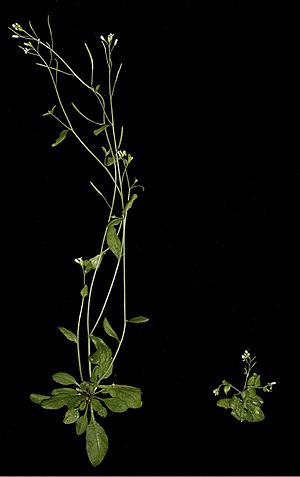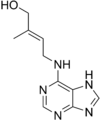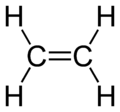Plant hormone facts for kids
Plant hormones, also known as phytohormones, are special chemicals that help plants grow and develop. They act like tiny messengers, telling different parts of the plant what to do. In the United Kingdom, they are often called 'plant growth substances'. One of the most well-known plant hormones is auxin.
These hormones are made inside the plant and are found in very small amounts. Even so, they control many important processes. They help regulate how cells grow and work. Plant hormones also guide the formation of flowers, stems, and leaves. They even help with the shedding of leaves and the development and ripening of fruit.
Unlike animals, plants do not have special glands that produce hormones. Instead, individual plant cells can make these hormones. These chemicals affect whether tissues grow up or down, how leaves form, and how stems grow. They also play a role in how fruit develops and ripens. Hormones even influence how long a plant lives and when it dies. Without hormones, plants would mostly be a mass of cells without clear shapes. This is why they are also called growth factors or growth hormones.
Phytohormones are not just found in larger plants. They are also present in algae and work in similar ways. Even fungi and bacteria can produce these hormones. They might use them to cause helpful reactions in the plants they live with.
Images for kids
-
Phyllody on a purple coneflower (Echinacea purpurea). This is a plant problem where leaf-like parts grow instead of flower parts. It can happen because of a hormone imbalance.
-
Zeatin, a cytokinin hormone.
See also
 In Spanish: Fitohormona para niños
In Spanish: Fitohormona para niños







